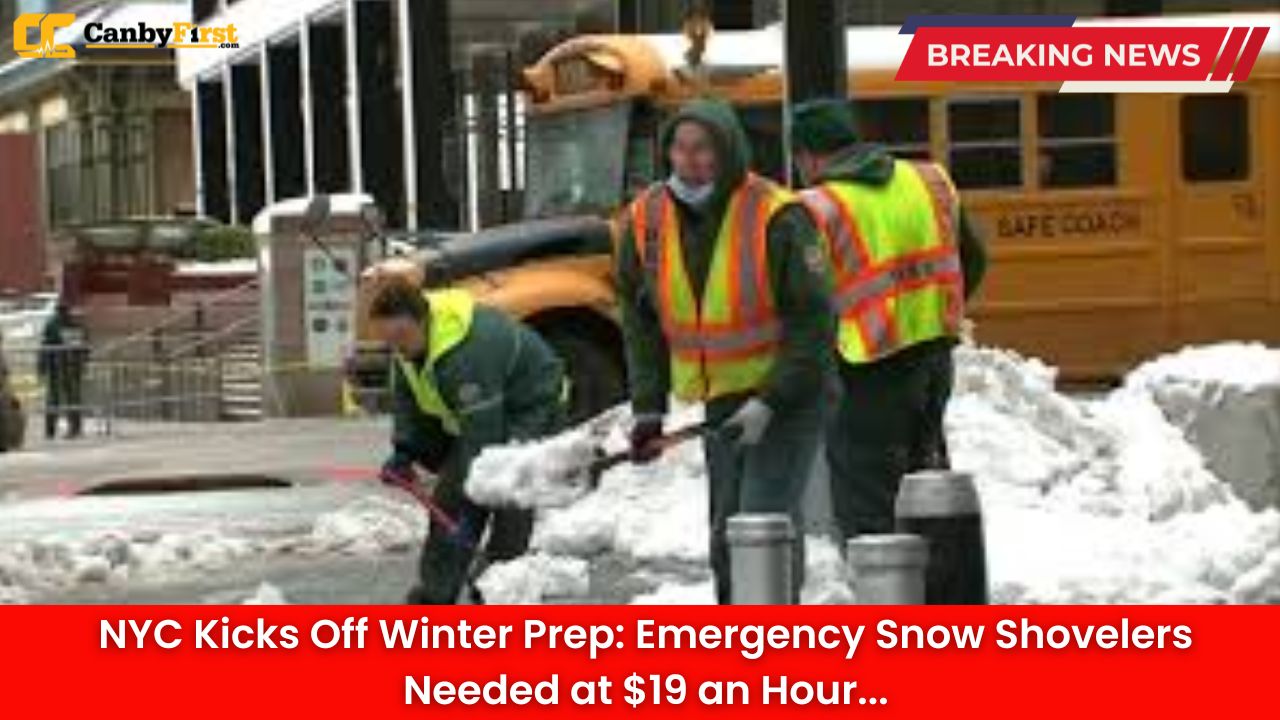New York, US:
With the first flurries expected within weeks, New York City is already gearing up for another potentially harsh winter. The Department of Sanitation (DSNY) has launched its annual emergency snow laborer recruitment drive, offering starting pay of $19 per hour for temporary snow shoveling jobs. The initiative, which opens immediately, aims to ensure the city remains operational even during heavy snowstorms.
Officials say the recruitment push supports thousands of temporary workers who help keep roads, crosswalks, and sidewalks safe during winter storms when Department vehicles can’t reach tight areas. These positions are vital to maintaining public safety and avoiding disruption in one of the busiest metropolitan areas in the world.
Also Read
Who the City Is Looking For
The Department is seeking physically capable New Yorkers aged 18 and above, with proper identification and authorization to work in the United States. No prior experience is required, though applicants must be prepared to work long hours in cold, snowy conditions.
Workers will be responsible for shoveling snow, clearing bus stops, fire hydrants, crosswalks, and other critical pedestrian areas throughout the city’s five boroughs. Pay starts at $19 per hour, increasing to $28.50 per hour after 40 hours in a week.
Applicants will need to bring a Social Security card, photo identification, and, for non-citizens, valid working papers. Those hired will be on a call-in basis, depending on weather conditions, meaning work hours are determined by snow emergencies.
How to Apply
Individuals interested in joining the city’s emergency snow response team can register in person at any of the Department of Sanitation’s 59 garages across the boroughs. Registration is open in advance of storms, and workers are typically notified before snowfall begins.
Once registered, snow laborers are added to a list that DSNY uses whenever a snowstorm requires manual clearance. Workers can be called on short notice, especially for major snow events that exceed standard operational capacity.
Why NYC Hires Emergency Snow Shovelers
Last winter, New York faced several heavy snow events, some dumping more than two feet of snow across certain neighborhoods. While DSNY deploys thousands of plows and salt spreaders, narrow streets, subway entrances, and public walkways often require manual clearing to ensure access and safety.
By supplementing its full-time workforce with seasonal snow laborers, the city maintains flexibility and cost efficiency. The temporary program has existed for decades and has become a reliable job opportunity for New Yorkers seeking short-term winter income.
A Welcome Opportunity Amid Cost Pressures
With the city’s cost of living continuing to rise, many residents view the program as a timely opportunity. At $19 an hour, the seasonal role provides a boost for those seeking additional or flexible income during the winter season.
For many, including students, part-time workers, and retirees, the snow laborer positions offer a chance to earn while directly helping their city. Some workers even return each year, treating the job as an annual seasonal tradition.
City Officials Emphasize Readiness
Sanitation Commissioner Jessica Tisch underscored the importance of the early recruitment drive, stating that having a robust roster of snow laborers ready before the first major storm ensures the city can respond swiftly.
“We need all hands on deck when the snow hits,” she noted in a public announcement. “Our emergency snow laborers play an essential role in keeping New York safe and mobile.”
The DSNY expects heavy participation this year, especially given the tougher weather forecasts predicting a colder and snowier winter across the Northeast.
Preparing for the Season Ahead
New York City is already conducting equipment readiness checks, salt stockpile inspections, and route mapping to prepare for the coming season. Officials remind residents to sign up for emergency weather alerts and to follow alternate-side parking updates, which may be suspended during snow events.
With the city’s streets, sidewalks, and transit systems all dependent on rapid snow removal, every helping hand counts. Snow removal crews work around the clock during major storms, with shifts often extending into 12-hour cycles. The addition of temporary labor ensures rotation, rest, and sustained operational capacity across all boroughs.
Residents Encouraged to Participate
The DSNY encourages residents—especially those seeking winter employment or supplementary income—to apply as soon as possible, before heavy snow season peaks. While roles are temporary, they often open doors to further city employment or other public service opportunities.
New Yorkers interested in participating are urged to check local DSNY facilities during business hours with identification and work documentation ready.
Looking Ahead
As winter 2025 approaches, preparedness remains the city’s top priority. From securing salt supplies to mobilizing vehicle fleets and emergency crews, New York is determined to stay ahead of the snow.
With emergency snow laborers forming the backbone of manual snow removal efforts, the city’s call for help is both a seasonal tradition and a community rallying cry—uniting New Yorkers in weathering the cold, one shovel at a time.
Quick Facts
-
Position: Emergency Snow Laborer
-
Hourly Pay: $19 starting, $28.50 after 40 hours
-
Requirements: 18+, ID, and work authorization
-
Application: In-person at DSNY garages across the five boroughs
-
Duration: Temporary, based on snow emergencies
FAQ
Q1: When do snow laborers start working?
They are typically called in just before or during snowstorms when manual snow clearing is required.
Q2: Can non-citizens apply?
Yes, if they have valid work authorization papers.
Q3: Are tools or equipment provided?
Yes, DSNY provides shovels, reflective vests, and safety gear.
Q4: How long do shifts usually last?
Shifts can run from 8 to 12 hours, depending on snowfall severity.
Q5: Do workers return each winter?
Many do. Returning workers often reapply each season once hiring opens.












